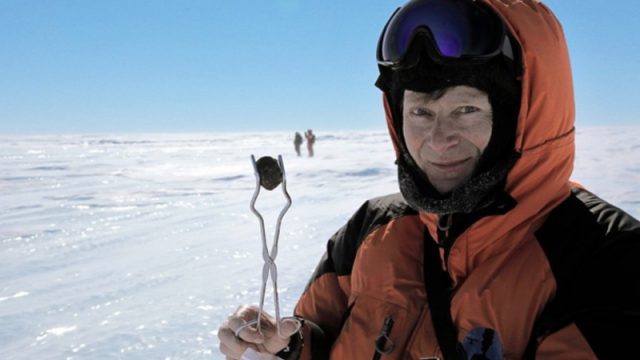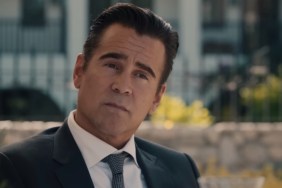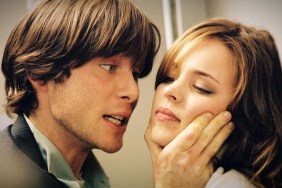The fascinating new documentary Fireball: Visitors from Darker Worlds is now streaming on Apple TV and ComingSoon.net was able to sit down and talk with the film’s directors, Werner Herzog and Clive Oppenheimer, who discussed what it was like to travel around the world to discover the power behind meteorites.
Here’s the synopsis: A journey across the planet and universe explores how meteorites, shooting stars and deep impacts have awoken wonder about other realms — and make people rethink their destinies.
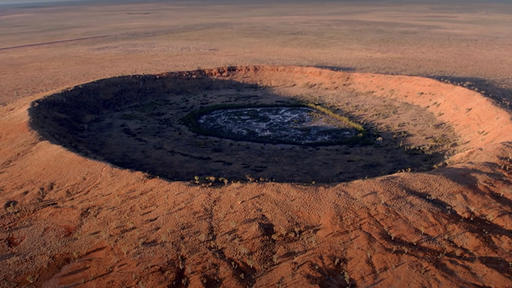 ComingSoon.net: Is it wrong for me to say this documentary, while fascinating, scared me a little bit?
ComingSoon.net: Is it wrong for me to say this documentary, while fascinating, scared me a little bit?
Oppenheimer: I hope it’s only half terror. I was in South Korea after the release of our last feature Into the Volcano and I met up with the Koreans who annually go down to Antarctica to search for meteorites for scientific work; and it was talking with Werner and seeing some of these remarkable stones, which is so exotic, but also thinking of the cultural significance of meteorites and impact craters to human societies around the world through time that I felt this was a topic rather like volcanoes which is not a science topic but an entanglement of nature and culture. And it speaks to cosmologies and anthropologies. So, I got back from that trip and put some ideas together with Werner and we took it from there.
CS: Fireball shows people worshipping meteors and also builds a strong case for why we should fear them. Where do you guys stand on this discussion?
Herzog: I think it’s not a debate, we must not be didactic. We must be very expedient of science and be in awe of what we are looking at. That’s how science functions and that’s how cinema functions.
Oppenheimer: It was something of a revelation to me to discover that NASA does have a planetary defense coordination office. So, the threat is taken seriously. The larger objects in the far future that might strike the Earth are being detected and being monitored. It’s not that when you see one of these things it’s coming straight at us. By and large they’re in a race track going around the sun like the Earth is. So, these potential threats can be identified centuries in advance of a potential problem. So, I certainly don’t lose sleep over the threat. It’s fascinating, the idea the existential threat has a deep history in the human imagination — the fear of comets and what it means and what the gods are saying when they’re interfering in human affairs with these signs in the sky. In the 19th century there was a lot of anxiety about the potential for a comet to strike the Earth. One of the first disaster movies, 1916 — a Danish film — The End of the World, which the scenario is astronomers see an object they predict is going to strike the Earth. And so, it does have a deep resonance for us. And that’s before we get to talk about the aliens and life forms that have been carried by these stones.
CS: What do you think Fireball says about religion?
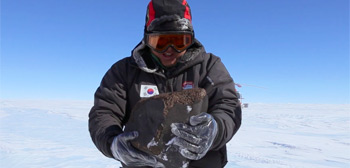 Oppenheimer: I think these are very alternative ways of seeing the world and using the human imagination to piece together what we see in the natural world. And when you think about how important the night sky was for our ancestors, in past civilizations, and the passages of stars, celestial bodies across the night sky dictated the tides and the pace of the seasons; and these were fundamental, or the practices of agriculture and navigation. And so, if something shows up in the night sky that wasn’t there the day before, then it’s gonna mean something. And it’s up to us to figure out what it means.
Oppenheimer: I think these are very alternative ways of seeing the world and using the human imagination to piece together what we see in the natural world. And when you think about how important the night sky was for our ancestors, in past civilizations, and the passages of stars, celestial bodies across the night sky dictated the tides and the pace of the seasons; and these were fundamental, or the practices of agriculture and navigation. And so, if something shows up in the night sky that wasn’t there the day before, then it’s gonna mean something. And it’s up to us to figure out what it means.
CS: With all the wonders and miracles that are inherent in meteors, why do you think people aren’t as fascinated with them as they probably should be?
Oppenheimer: I think they’re just topics that we don’t know much about. I mean, I’m a geologist. I didn’t realize that there are some meteorites if you snip them, they smell like the contents of a vacuum cleaner. Molecules, organic molecules from the earliest times of the solar system. Not biological, a biotic inorganic molecule — amino acids and sugars. Yes, there is a popular culture around the demise of the dinosaurs at the end of the Cretaceous. But there’s an awful lot more to these stones that I wasn’t aware of that I discovered through making this movie
CS: Of all the places that you journeyed to in the film, which location did you find to be the most fascinating?
Herzog:There’s some obvious places, Antarctica … and then the sports arena in Oslo where we find a jazz musician who started a new branch of science.
Oppenheimer: I loved our array of locations — on the roof of a sports arena in in Oslo and on the polar plateau in Antarctica. So, there’s certainly some variety — the Vatican Observatory. Who knew that the Pope has an astronomer? So, these were discoveries for us as much as they are for the audience.
CS: You mentioned the scene in Antarctica, which was my favorite scene in the film. What was it like to be out there to be on this patch of land that just goes on for miles?
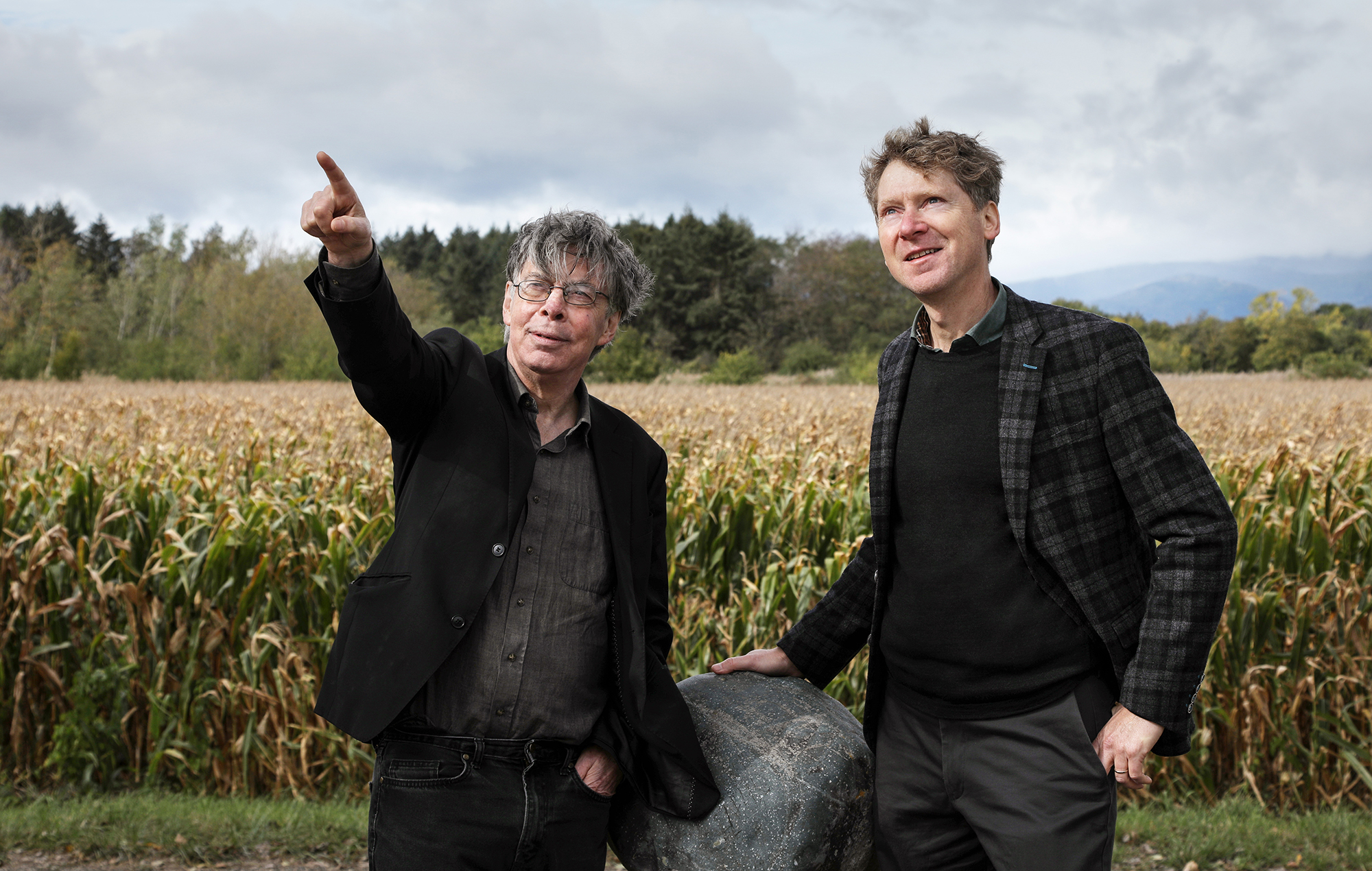 Herzog: I think the commentary puts it in perspective. A person can walk on for 5,000 miles — as large a distance in crossing the continental United States. You can walk 5,000 miles without encountering a human. And the day will end in five months because the sun is circling in the sky doesn’t go down. So those are the dimensions.
Herzog: I think the commentary puts it in perspective. A person can walk on for 5,000 miles — as large a distance in crossing the continental United States. You can walk 5,000 miles without encountering a human. And the day will end in five months because the sun is circling in the sky doesn’t go down. So those are the dimensions.
Oppenheimer: I think one of the sensations for me in Antarctica is a very extraordinary aloneness. I mean, not in a mawkish sense, but it’s such a vast terrain. And you are almost in that situation where you’ve stepped outside the space capsule in a very, very hostile atmosphere — very, very, very cold. And you’re enduring a lot of extreme weather gear to cope with it. I find my spirits soars actually when I’m in Antarctica and out on the top of Erebus volcano … I feel alive.
CS: Are you still surprised by these different locations and societies that you visit?
Herzog: The world is full of full of surprises and full of awesome things. It’s just right around you. Everything.
Oppenheimer: I think one of the things that we know — those of us that live in cities, and that’s more than half of the world’s population now — where we have become very dissociated from nature in the natural world. Even though I live in a village, outside Cambridge in England, I’m lucky if I see a dozen stars in the night sky. And I think you could ask many people who live in cities, When did you last see the Milky Way? You can probably ask kids, Have you ever seen a single Milky Way, and they might not even know what you’re talking about.
Herzog: This is something that we read last week about the earthquakes in the valley in 1996 or something. Someone called the 911 emergency room …
Oppenheimer: Oh, yeah, that is referring to the earthquake that struck LA in ‘94 in the winter and at night. So, people ran outside their homes. And pretty soon people were calling emergency services because they spied a silvery cloud in the sky and thought maybe there was some emanations from the San Andreas Fault from noxious gases. And whereas what had happened was the earthquake had knocked out the power grid and people were seeing the Milky Way for the first time.
CS: So, what you’re saying is that we just need to look up a little bit more, right?
Oppenheimer: Yeah, we all have lights in our backyards. We can’t get away from light pollution now. That’s not good news for astronomers. But there is a Dark Sky Park, and I think this is a wonderful thing, to kind of rediscover the night nocturnal; and that aura of the infinitude of night sky, the stars.
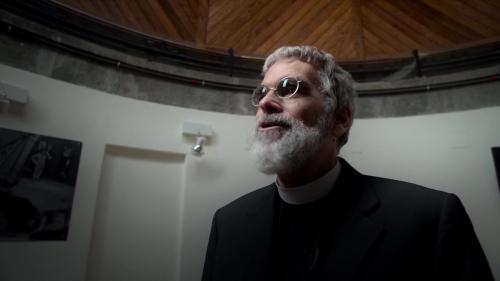 CS: I would say that’s why a documentary such as Fireball is important because it helps us remember just how amazing our planet is.
CS: I would say that’s why a documentary such as Fireball is important because it helps us remember just how amazing our planet is.
Oppenheimer: One of the places where we filmed was at Arizona State University at the center of meteorites studies, where we have a really wonderful collection of historic specimens, as well as very recent ones. We sniffed the Aguas Zarcas meteorite that fell in Costa Rica last year, which has this remarkable pungent odor of organic molecules. But there’s the collection, a lot of that collection, I think it’s from one of the pioneers of meteoritics science, Harvey Nininger. And he observed a bright fireball in the sky — I can’t remember where — in Texas or New Mexico and he said, I figure if I head out to the desert, I’ll be able to find the stone that hit the ground. And so, he goes out and everyone says, you know, you’re crazy, there’s no way of finding it with all the rocks out in the desert there. And sure enough he didn’t find it. But the remarkable thing was he found a lot of other meteorites. And that’s when people realized if you can be systematic about how you go out and you go these places where the surfaces are undisturbed for long periods of time, like the desert, on land or in Antarctica, you’ll find these stones and they are extraordinary relics of the earliest period of the solar system.
CS: What is a good starting place for somebody to get in this type of field?
Oppenheimer: A conventional route might be through the geosciences through geology, geochemistry, and chemistry as well. But, I think, like volcanoes there are different angles, astronomy, planetary science, planetary missions. There’s archeoastronomy — there’s a whole field of where people are looking at indigenous knowledge of the night sky, the significance of meteors. There are different ways to approach it and they are all very, very fascinating.
CS: You guys first met while making Encounters at the End of the World. How has your relationship changed over the course of these projects?
Werner: I think it hasn’t, because I was immediately surrounded by the presence of Clive at the top of a volcano and in Antarctica — five degrees below zero. I said we should stay in touch a film together some day. Ten years later, we were out of touch. I mean, not completely. Clive showed up for the volcanoes and this film on meteorites. In both cases we would do it in the spirit of friendship, in the spirit of respect.
